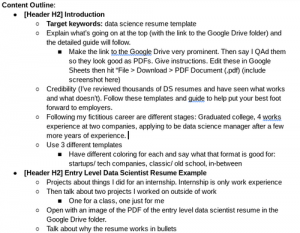— January 22, 2018

kirstyfields / Pixabay
Video marketing continues to be a rising trend as more and more businesses look to market themselves in new, effective ways. The numbers continue to justify the actions, year after year.
According to a 2016 survey, 76 percent of businesses say that the use of video marketing has provided them with a good ROI, and that number only continues to increase as time goes on. Potential clients seem to connect more with a business when there’s a video on their website, preferably on the front page.
Why? When you’re optimizing your company’s website so it ranks highly on search engines (SEO), videos tend to push your ranking in the results pages up a few notches. In fact, your website is 53 times more likely to show up first on a Google search engine results page (SERP) if you have a video embedded on your page.
But, how can all these insights help your consulting firm? Good question!
Whether you’re focused on financial consulting, IT consulting, HR consulting, business consulting, or a different field, you’re constantly in competition with other firms and independent consultants. You have an extremely limited amount of time to capture the interest of your audience and demonstrate your value – making video the perfect tool.
Taking up just a few moments of your site visitors’ time, video can generate excitement, convey your talent, sum up the most important information on your site, and encourage potential clients to reach out.
You can create your own videos, whether it’s a simple Facebook live stream or a professionally produced video, to market your consulting firm. Here are 10 steps to video marketing for consultants:
1. What’s your story?
The first step is to decide what message you want to convey in your video. Videos are visual stories, and without a story, there’s really no point to producing video at all. Not sure what to make a video about? Think about all the things that make your consulting firm unique, and ask yourself these questions: What can you do for clients that other firms can’t? What is your niche area that you excel in the most? If you could give your audience the story of your firm, how would it go?
After you answer these questions about yourself, take a moment to also consider the questions that your clients may have. After all, they’re on your website or social media page because they’re looking to have their problems solved. How can you answer your clients’ questions before they ever even have the chance to ask them? The answers to these questions will help you determine your story. It should show your firm’s expertise and be directed at the person watching it.
2. Strategize
When you’re producing videos, don’t forget that video is another piece in the digital marketing puzzle. It must fit in with the rest of your messaging, branding and strategy.
One of the great things about video is that it can be used in a number of different online channels such as your blog, on your website, on social media, and in your advertising. Be sure to use a video hosting website that will meet your video tracking needs, such as YouTube or Wistia. YouTube is a great choice for building SEO while Wistia is built for video marketing specifically. Hosting your videos in one location, and embedding or linking to them across different channels will help you to track your results more accurately.
Before you even start the production process, decide how you will use your video to meet your marketing goal. Want to generate leads? Perhaps add an optional email gate that asks visitors to give their email address halfway through the content for more information. Or, you could use it as downloadable content in return for their contact information. Want to drive engagement? Post it to social media and ask your followers if they have any additional questions. When used strategically, video can help solve your marketing challenges.
3. Talking points or script
Just like in public speaking, it’s a good idea to develop talking points, rather than an exact script. Your video will come across as more genuine and personable if you talk as though you’re speaking to a friend. With an exact script, you run the risk of sounding cold, or inauthentic. Video is a unique opportunity to show a bit of personality and company culture, so don’t be afraid to use it.
When it comes to creating a cleaner, more professional video, scripting may be a better option to fit with the style and tone of the video.
4. It’s all about location
Whether you’re producing a more polished video or simply posting a quick vlog, it’s important to choose a filming location that will work for your needs. Think about each element of the video, including lights and sound. Do you have a location that is quiet, and won’t produce a lot of echo? Is this location bright and light? If you don’t plan to invest in lighting equipment, try to find a room with lots of windows to allow for plenty of natural light.
The background of your video should also reflect the message you want to send. Is it clean and professional? Modern or upscale? Think about the message you want to send to your potential clientele, and consider how even the subtle background of your video can help shape that message.
If you don’t have a great background in mind, consider purchasing a green screen so that during the editing process, you may place yourself anywhere. However, with a green screen, it’s important that the lighting be just about perfect upfront, and requires a little bit of extra work with editing on the backend.
5. Equipment
There’s a wide range of equipment you can use for your videos. When it comes to cameras, you can use anything from your smart phone, ranging all the way to professional DSLRs. Many modern smartphones have impressive cameras built in that can provide impressive, professional looking footage.
If you want an image that looks a little more professional, consider investing in a dedicated video camera. Regardless of the camera you decide to use, be sure to also use a stand or tripod for steady footage. If you’re using your smartphone, you can purchase a small stand for a reasonable cost.
In terms of audio, be sure you’re capturing clean sound by taking a few test recordings, and playing them back. For cleaner recordings, you can even purchase a microphone like a lapel mic or directional mic. However, for casual social media videos, this may not always be necessary.
The equipment you use is up to you, and depending on the end results you want, you can invest a little or a lot.
6. Shooting
Block out a scheduled time specifically to shoot your video. You’ll most likely get better footage if you don’t feel pressured or rushed to be somewhere else. Then, once you have the opportunity to take your time, try a few test runs. Go back and watch the video to get a better idea of how the end product will look. Is the audio clear and easy to understand? Is there enough light?
If you don’t like watching video of yourself, or have an understandably biased option, don’t be afraid to ask someone else for honest feedback.
7. Gather additional media
After you’ve recorded the footage you need, think about any other media you may need to use for your video, like photography, b-roll, music, animations or graphics. Videos tend to hold attention better if you incorporate interesting visuals, whether it be examples, stock photography or other video clips. Only the most interesting man in the world could hold someone’s attention for two minutes straight, and maybe not even then.
You’ll want to compile these media clips into one place for easy access during the editing process.
8. Editing
Congratulations! You’ve shot your video, gathered your materials, and now it’s time for the real work: editing.
There are many different video editing software’s available, with the most popular choices being Final Cut or Adobe Premier. While you can create a professional looking video using free software like iMovie, you’re more limited in your capabilities than you would be with a professional video editing software.
9. Sharing
Now it’s time to share your video. Once you’ve selected your video hosting platform, upload your videos and take the time to fill out the tags and descriptions. These will give your video an SEO boost.
Embed it on your website, share the link in your e-newsletter, and post it to your social media pages, so long as it fits with your overall marketing strategy.
10. Track results
Like any other marketing tool, it’s important to track the results of your video to measure its effectiveness. Did it get the numbers of views you expected? Did it perform better on one channel as opposed to another? Was it successful in generating leads?
Use this information to your advantage the next time you create video content, so that you may consistently improve with each one that you do.
Digital & Social Articles on Business 2 Community
(72)
Report Post







